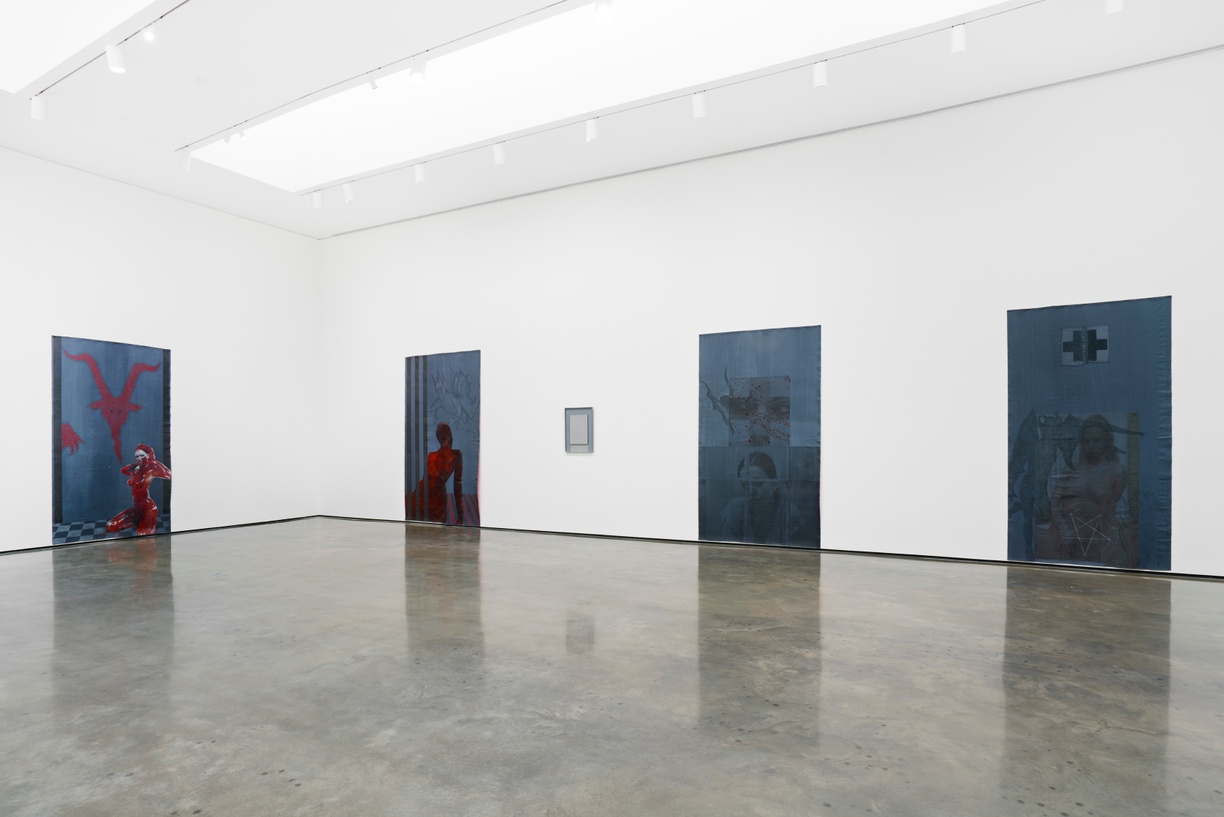
- Laura Brown
Darja Bajagić’s works use images that are laden with specters of power, threat, innocence, and violence. These are found in many channels of circulation: news stories, true crime reporting, unidentified persons databases, missing persons campaigns, murderabilia websites, gore forums, advertising materials, underground zines, and pornography. These images contain figures who are often named in the title of each work, available to be searched out. Removed from their circuits to be repeated and re-presented in proximity to multiple other cut-out images, here they appear more similar than they are different. These images come into contact with other forms and resemblances that recur in Bajagić’s works—bars, checkerboards, borders, blank space, splatters—brought together by means of seriality and repetition.
Bajagić draws into tension the way particular images of people appear and reappear in the world, and are destined to do so. Admitting being both obsessed with and disturbed by them, she holds the status of these images in suspension, generating an ambiguity of both purpose and response. These works elicit libidinal, bodily, and chemical effects that cannot be easily reduced or identified. Bajagić contravenes an immediate or binary moral response, producing conditions which turn these images to mirrors and their characters to presences, reflecting the one looking. These works, although pinned to the wall, are both spatial and time-based, involved in a careful mode of pattern recognition that extends past this direct encounter. In this process, we may detect and measure what remains hidden from view: one’s own familiarity with, and intense responses to, these images and their presences.
Born Losers is Bajagić’s first US solo institutional exhibition, presenting a new series of work alongside earlier monochrome studies.







